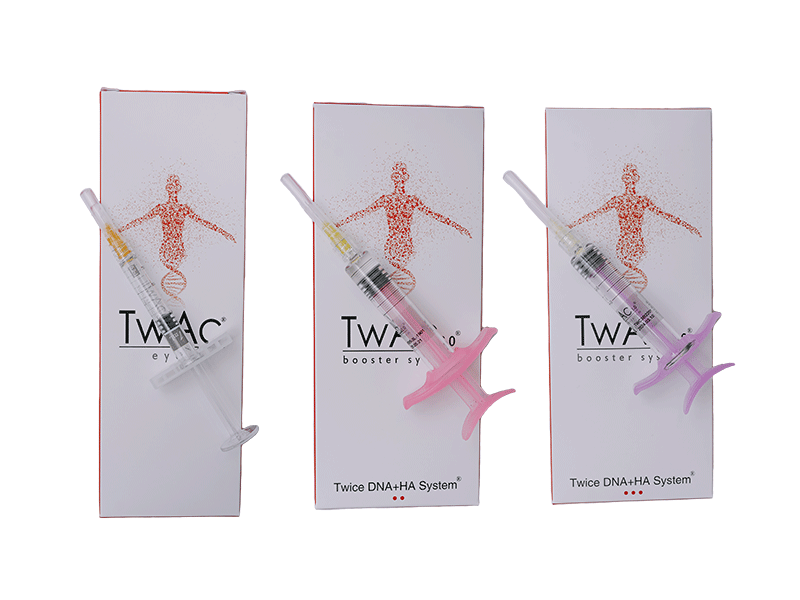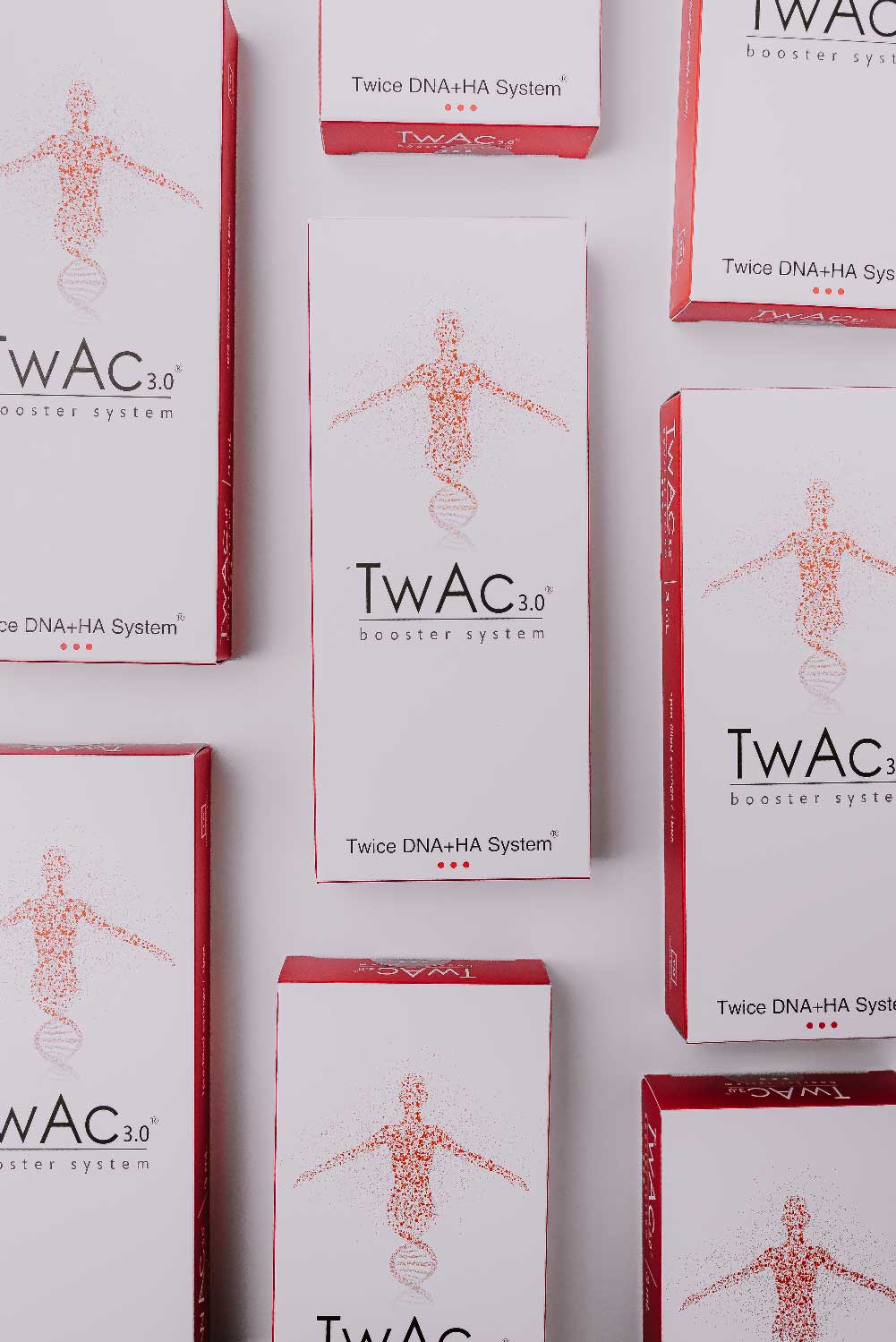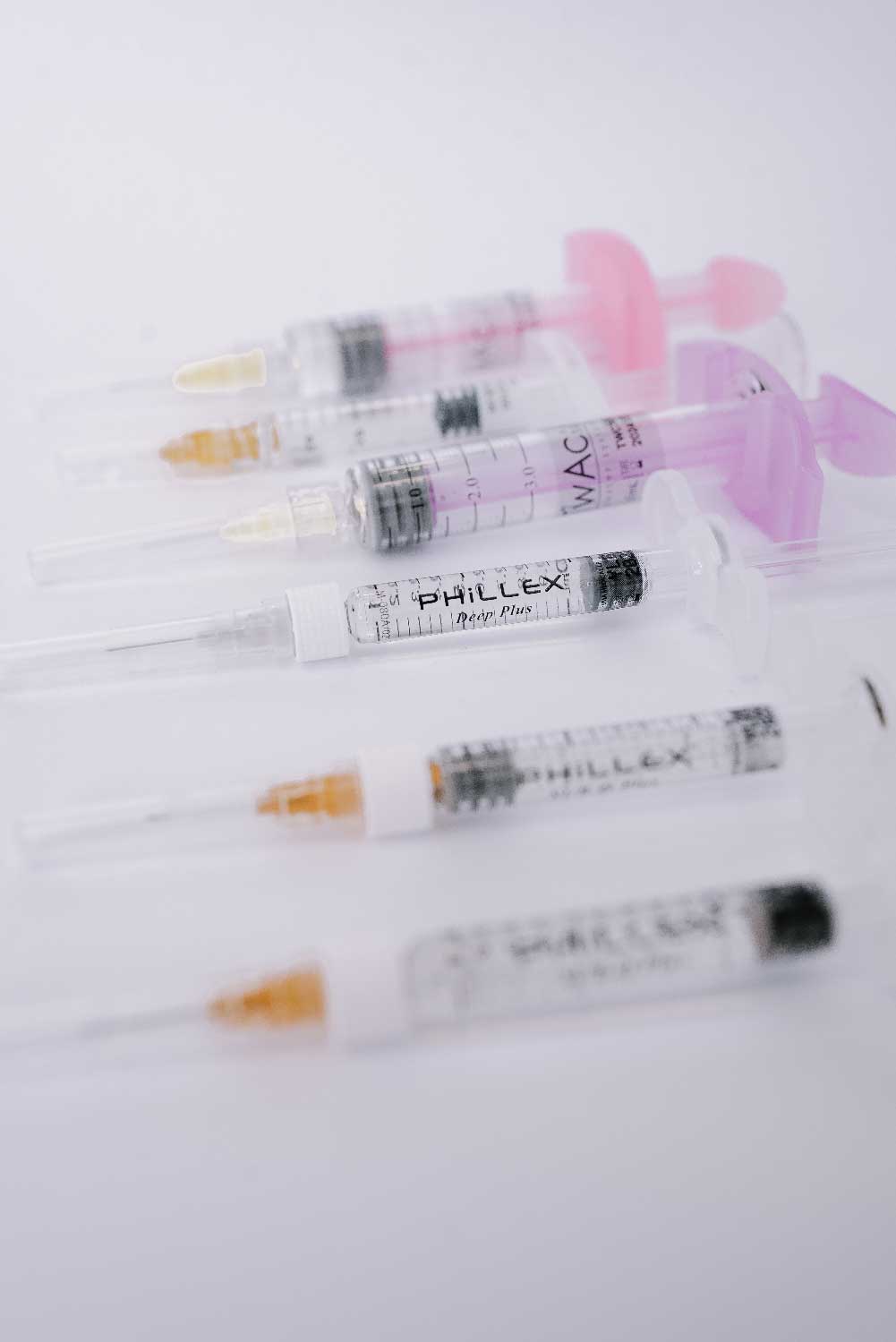

Polynucleotides
the basis of life!
About


PDRN influence on the skin
- 1 Cell growth enhancement mediated by the A2 purinergic receptor activation
- stimulate the reparation processes
- fasten re-epithelisation and cicatrisation of skin
- provide fast and harmonious formation of granulation tissue in the wound area
- increase the cell metabolic activity
- stimulate angiogenesis
- amplify the moisturizing effect of hyaluronic acid
- decrease the level of pro-inflammatory cytokine TNF-a
- are highly effective traps for free radicals (protect from damaging by metabolites, xenobiotic, temperature factors, etc.);
- protect against UVB-radiation.
POLYNUCLEOTIDES became a real sensation in the cosmetology world. Polynucleotides are the “bricks” repairing the skin from the inside, increasing the collagen production, and being a powerful growth factor stimulator.
PDRN is a “pro-medicine” providing the cells with a sufficient quantity of desoxyribonucleotides, desoxyribonucleosides and nitrogenous bases.

Ill THREE-PHASE PEELING
The proliferative activity exerted by PDRN was significantly counteracted by the A2 antagonist 3, 7-Dimethyl-lpropargylxanthine (DMPX), but not by the A, antagonist 8-cyclopentyl-1, 3- dipropylxanthine (PD 116,948, DPCPX). Accordingly, the trophic action of PDRN was mimicked by the A2 agonist N6-[2-(3,5-Dimethoxyphenyl)-2-(methylphenyl)-ethyl adenosine (DPMA), while the A, agonist N6-Cyclopenthyladenosine (CPA) did not show any effect. In microfluorimetric studies, we observed that PDRN and adenosine increased the concentration of cytosolic calcium ions. The PDRNevok. ed calcium rise was dose- dependent and DMPX sensitive. Taken together, our results suggest that PDRN may operate as a pro-drug providing the cultured cells with an effective amount of mitogenic deoxyribonucleotides, deoxyribonucleosides and bases; moreover, cell proliferation enhancement that has been induced by PDRN seems to be mediated, at least in part, by the activation of purinergic receptors of the A2 subtype.
By its structure PDRN is a fragment of DNA molecule, a unique polymeric molecule with various positive features influencing the cellular processes in the human body and homeostasis without any toxicity and contraindications.
The scientific researches showed that low-molecular DNA with a molecular weight below 500 kDa bears no genetic information. It’s known that such a low-molecular DNA cannot induce a genetic transformation even in bacterial systems. There was no allergic or other adverse reactions and severe side effects.
Histological studies
| Hyaluronic acid | Control group | Polynucleotides | Polynucleotides
Wound healing, changes at the histological level 72 hours after skin incision | |
Hematoxylin-
Sirius red staining
Sirius red polarized |  | |||
| Wound healing, histological evaluation after 72 hours from skin incision (rats) | ||||

Booster system TwAc: triple action +…
Increasing of turgor, tone and elasticity of skin
Due to the polydesoxiribonucleuotides’ ability to bind and coordinate the water molecules, has an immediate moisturising effect, increases turgor, tone and skin elasticity. + Face tissues lifting
Free radicals neutralising
PDRNs bind and neutralize free radicals. Influenced by the extracellular enzymes a degradation of polynucleotide macromolecules takes place with formation of metabolites which in its turn induces antioxidant activity. + Clinical effect up to 3 months
Stimulation of regenerative and secretory function of fibroblasts
Recreation of the most favourable conditions in the dermal matrix, stimulating the metabolic activity and regeneration Balance of elements composing the amorphic matrix is restored (glycosaminoglicans, glycoproteins, fibronectin, and other proteins) as well as fibrillary matrix (collagen, reticular fibres). + Improvement of skin texture, lightening of tissues
Increase of collagen amount

Increase of non-collagen structure proteins (fibronectin)


Product range

 |  |  | |
| Formula | PDRN 2 mg/ml deoxyribonucleic acid 250 – 350 kDa | 5 mg/ml, PDRN 15 mg/ml HA 1500 kDa | 10 mg/ml, PDRN 20 mg/ml HA 1800-2500 kDa |
| Indications | Skin atonia in the area of eyelids, without a considerable ptosis | Early skin atonia, uneven colour, porosity 30 and older | Deformational ageing type with gravity, unevenness of colour, widened pores, folds, wrinkles. 35 and older |
| Injection depth | Papule, location depth of the product 1-2 mm | Intradermal, location depth of the product 1-3 mm | Intradermal, location depth of the product 3-4 mm |
| Syringe volume | 1.0 ml | 3.0 ml | 3.0 ml |
| Needle size | 32G | 30G | 27G |
| Storage | 2-25 ˚C | ||
| Intensive/standard course | 7/10 days | 30/60 days | 45/90 days |
| BDDE | – | + | + |
| Dynamic viscosity [mPa.s] | – | ~250.000 | ~500.000 |
| Shelf life | 24 months |


